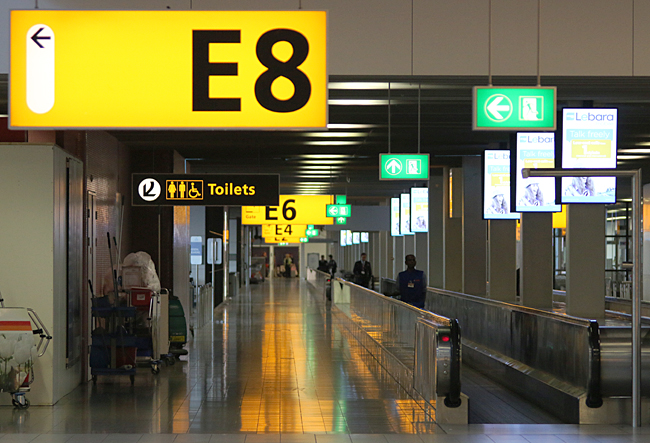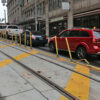“M oving sidewalks, I don’t see under my feet” is a line from the 1984 hit song I Can Dream About You by the late Dan Hartman — I never really understood the meaning of that line, admittedly — and United Airlines will have you saying that lyric while you are in Concourse C of Terminal 1 at O’Hare International Airport in Chicago, where all eight of its moving walkways will be removed by spring of 2016.
According to this article written by Jon Hilkevitch of the Chicago Tribune, Luke Punzenberger — a spokesperson for United Airlines — said that “The walkways in C inhibit passenger flow across the concourse. Removing the walkways will make it easier for customers to move both lengthwise and across the width of the concourse.”
The article goes on to say that the moving sidewalks provide a resting spot for some travelers who — while catching their breath — can still be on the move; as well as being a tool to help more energetic passengers reach their gates faster.
Additionally, the article states that every year, hundreds of walkway users at airports in the United States get hurt taking tumbles, according to safety authorities — which causes me to stop and wonder what are the statistics for escalators.
I have witnessed children who cannot seem to “resist the temptation to behave like the walkways are an amusement park ride”, as they will climb onto the rubber handrail to ride it; or run in the opposite direction of the moving walkway.
Research reportedly indicates that the moving walkways do not save travelers significant time because people tend to walk slower when using the devices. Not me, as when there is a moving sidewalk, I do use it to arrive at the gate faster — but not because I am late for my flight. Rather, I like to go to a seat at the gate or an airport lounge to relax a little before boarding of the airplane…
…and my walking pace is usually slightly faster than that of a typical New Yorker walking in Manhattan; so the moving walkway — or travelator, as I have seen it called in airports such as the one in Singapore — allows me to travel even faster.
The article correctly notes that there are downsides too. Individuals who do not follow walkway etiquette — walk left, stand right — create traffic jams; and when that happens, my walking pace is typically faster than that of a moving walkway, so I will avoid it in that case.
It can be irritating when a moving walkway is too long and you bypass your destination — usually the gate — while traveling on one.
This is not necessarily an idea which I support, as I am simply throwing it out there; but perhaps there should be moving walkways reserved for those who have trouble walking long distances but do not want to summon an electric vehicle to transport them?
If I cannot use a moving walkway, I simply shrug it off as needing the exercise anyway. Similar thoughts go through my mind when I park a car in the far corner of a crowded parking lot. I am thankful that I have healthy strong legs…
…and if a moving walkway is broken, it is of no use anyway. Besides, moving sidewalks do consume energy — which can be conserved for other uses — and require maintenance, which therefore costs money.
As you can see, there are arguments supporting and opposing the usefulness of moving walkways in airports. As I am a healthy individual, I personally have no preference for either side of the argument; but what are your thoughts? Are moving walkways useful — or are they useless?
Photograph ©2014 by Brian Cohen.
[yop_poll id=”15″]

